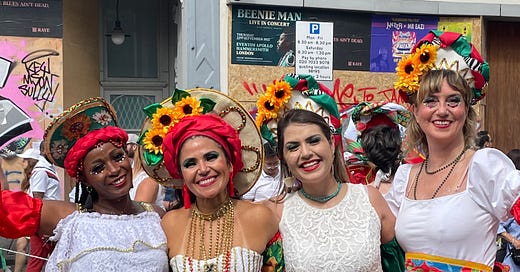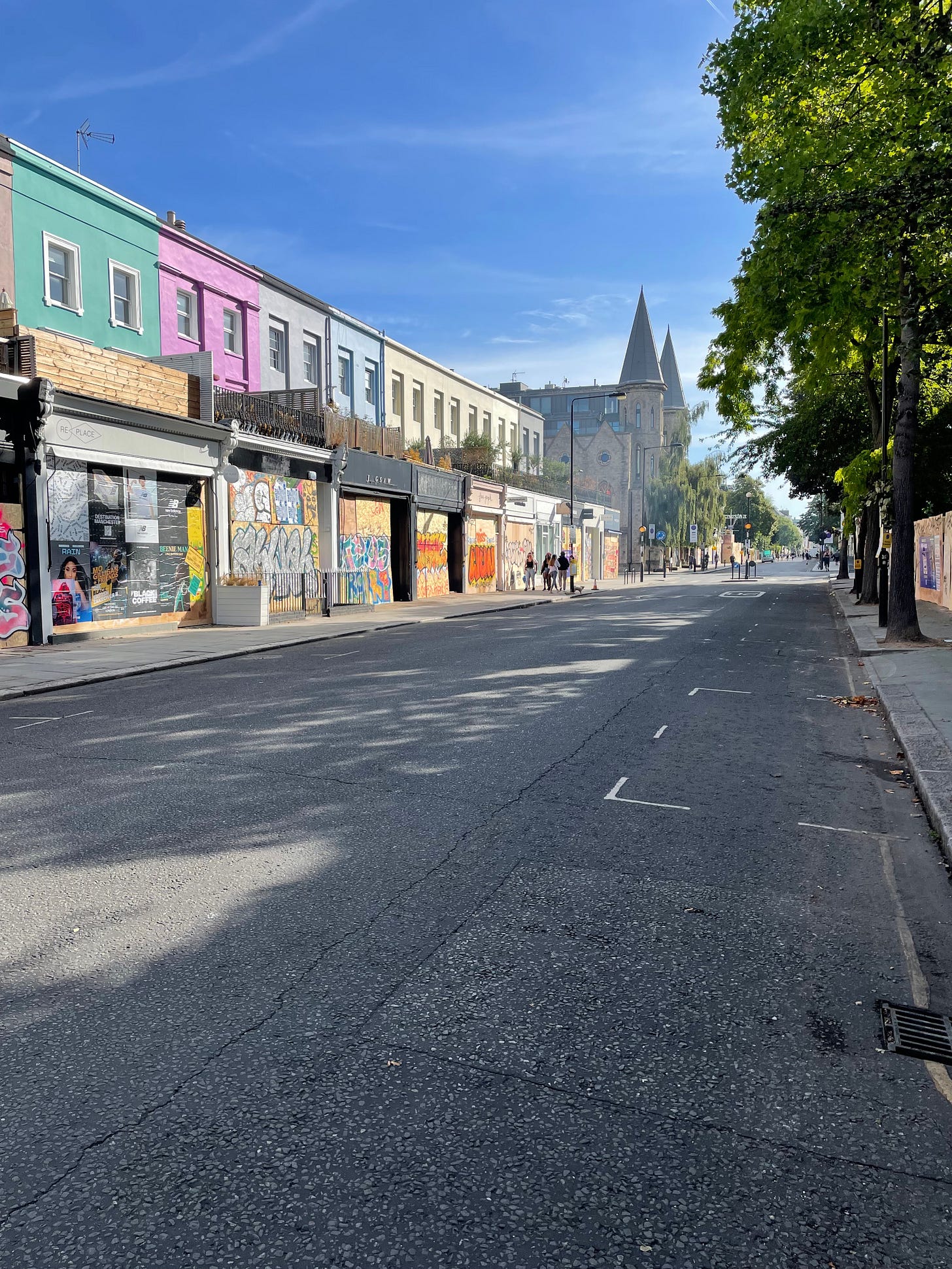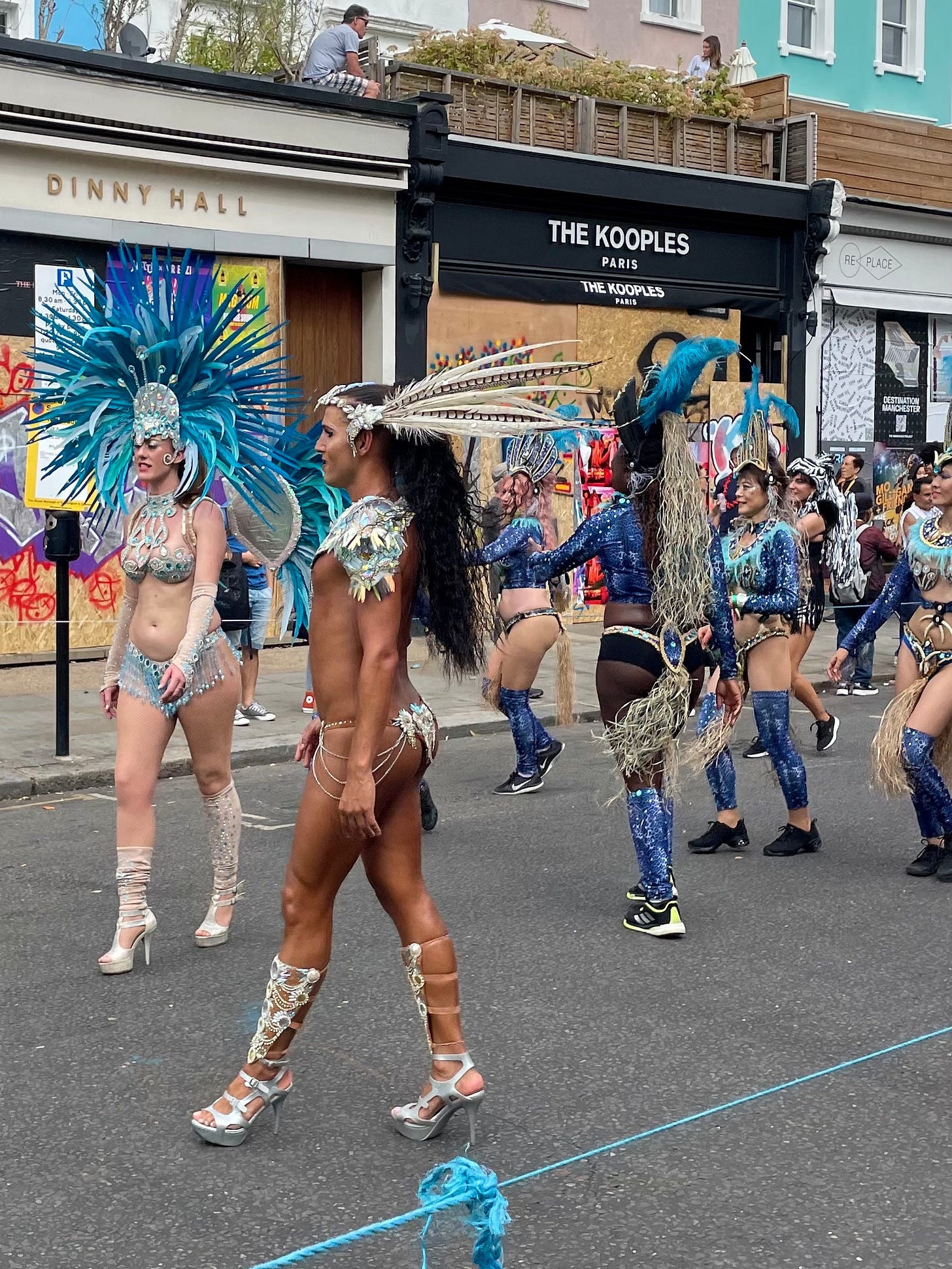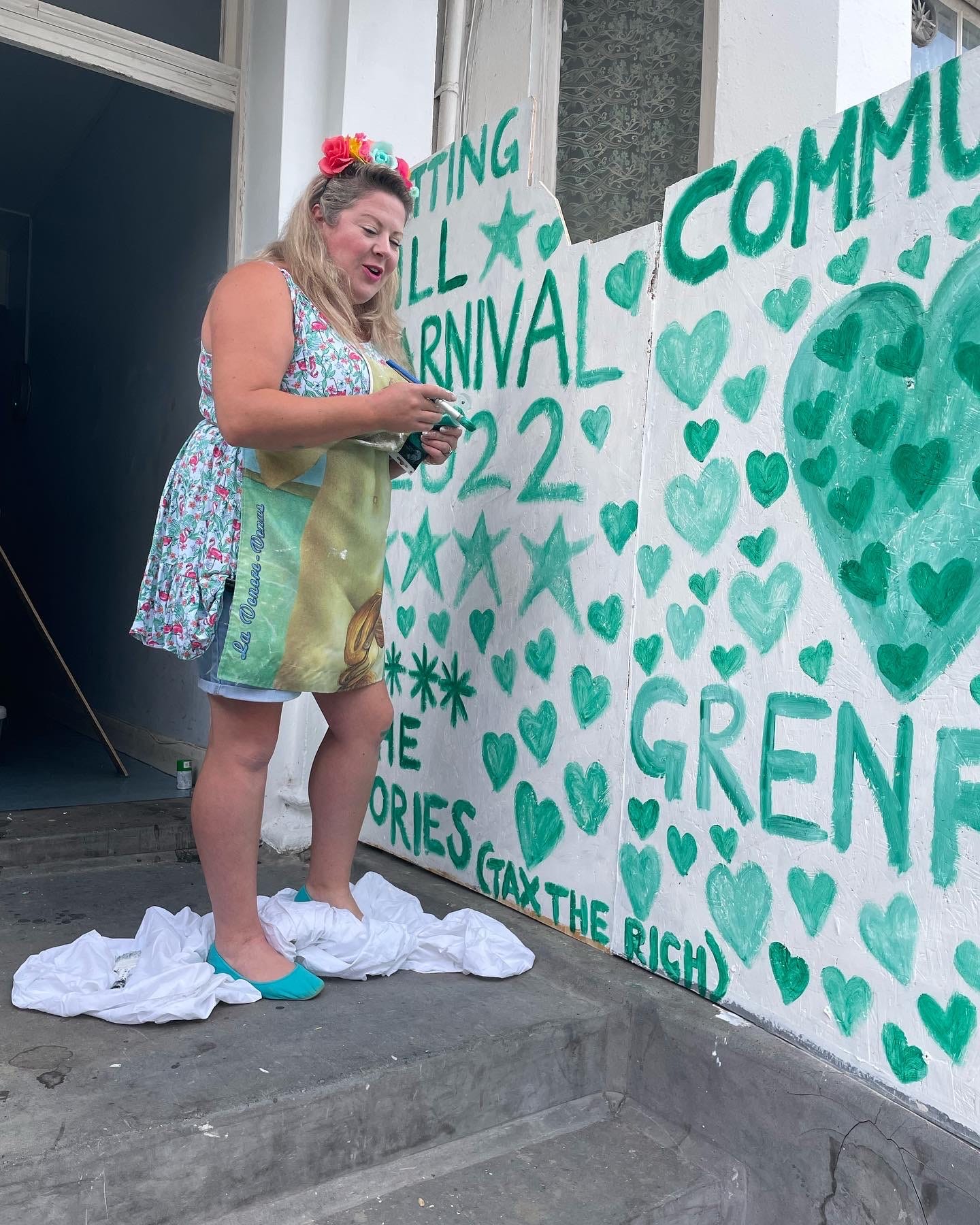When we first moved to Notting Hill, we didn’t think much about Carnival Weekend. It wasn’t that we were avoiding it, as some of our neighbours and nearly all the shops do. We’d just made other plans, unaware of what else was so famously happening on the Bank Holiday calendar, the last weekend of August.
Then Covid came and the two and a half million people expected every year, all missed the world’s second largest street festival, cancelled for the last two years. (Rio de Janeiro Carnival in Brazil is the biggest).
Boys From The Black Stuff
This year, we watched as the designer clothes emporiums and food stores, stuffed with organic goodness, got a makeover from white van men. The fresh chipboard covering the shop frontages, provided a perfect canvas for London taggers (graffiti artists) to add colour with their monikers. The effect was quite startling. London W11 was transformed in a few short hours, to inner city Liverpool in the 1980s and the backdrop to Boys From The Black Stuff (Alan Bleasdale), a story which follows the lives of five unemployed men.
The overblown cars and lifestyles synonymous with well heeled Notting Hill, gone, replaced with a downtrodden calm, no shops, no money, no one on the streets. All it needed was Yosser Hughes (Bernard Hill), pre-occupied, agitated and shouting at no one in particular, to march around the corner, puncturing the silence with, Gizz a job. I can do that!
Persecution and humble beginnings
The origins of this carnival and others like it, can be traced back to the slave trade. Mardi Gras in New Orleans or Carnival on the Caribbean islands was a masquerade ball for society’s elite - the French plantation owners.
The landowners and their families enjoyed these annual celebrations, traditionally tied to the Christian calendar. They were deemed, strictly off limits to all enslaved people.
With emancipation, new traditions were created. The masquerades were blended with African tribal dance and music, which were often used to mock their former enslavers. It became their only real chance to celebrate and express themselves after the sugar cane had been harvested. The people might have been free but the British and French had already banned the use of drums and cow horns, which were associated with organised rebellion. Apparently they could now only be used for traditional religious celebrations.
The Notting Hill Carnival was an essential response to the racial tensions which had been building in Britain in the late 1950s. It culminated in the death of an innocent black man, after a racist mob of 400 armed white thugs decided to march through the streets of Notting Hill.
It was also because of Rhaune Laslett. She was a community activist who became president of the London Free School, the aims of which were “to promote cooperation and understanding between people of various races and creeds through education and working together”. The idea was born for a free festival and 26 Powis Terrace became its base.
The first fayre and pageant
It was held over a week, starting on the 18th September, 1966. Laslett invited the ethnic groups from the poor area of Notting Hill - Ukrainians, Spanish, Portuguese, Irish, Caribbeans and Africans to join in. Costumes were borrowed from Madame Tussaud’s, a local hairdresser did hair and make-up for nothing and Portobello stall holders donated horses and carts. The parade included the London Irish girl pipers, a Caribbean marching band, Ginger Johnson’s African-Cuban band and Russell Henderson’s Trinidadian steel band. About 1,500 people turned up according to police figures.
What was August 2022 like?
The Carnival is a two day festival now. Family day is on the Sunday, Monday for everyone. Watching the floats go past is an afternoon pursuit with trucks moving slowly through, every few minutes. The flat-bed vehicles form a natural stage for the steel bands on board or the seriously stacked sound systems with well versed DJs addressing their fans. Aside from the amazing costumes worn by all sorts of people behind some floats, there is also a significant crowd, quite clearly walking in step. It’s like a tidal bore on a river coming towards you as people spill out towards the kerbs on either side. Walkers with ropes, try and contain the bulge.
At first, I didn’t understand why this was happening? Each float attracting its own community of followers who fell in behind, rather than being spectators to the whole event. These folk have paid to be there. Their tickets include food and beverages as they walk the 3.5 mile route, all in support of their particular cause. There was often a second vehicle in tandem, where they could put their feet up for a minute or two, have a drink, eat lunch. Some preferred to walk and eat.
With the earlier floats, crowds still building, it was easy to step into the road and take photos.
But by Monday afternoon, the best place to be was the pavement, ideally behind a tree. It was packed, which starts to explain why the Carnival is the size of 11 Glastonburys.
Early bird
The best time to explore was earlier in the morning (10.00), before the majority of people arrived. It was easy to wander past the street vendors and watch some of the other side shows.
This lady was on her doorstep. We had a chat about waiting for change and agreed it was at least 2 years away.
Elvis meets Roy Orbison? Swaying as opposed to shaking his silky hips, this was a one man show close to the centre of operations in Powys Square.
Mrs H even found time for a bit of shopping.
Free for the people
This two day spectacle is free to all. But it’s still a significant undertaking for the 9,000 police and 40,000 volunteers. There is also a sizeable clear-up operation for the two local councils whose manor it runs through.
There have been rumblings over the years about moving the whole event to Hyde Park, which could better accommodate such a spectacle. Why not take over the Hyde Park music site and charge everyone £50 to enter? They could replace all of the oil drums barbecuing jerk chicken with shrink-wrapped avocado on sour dough.
It’s not going to happen. Such suggestions are from people detached from the history and significance of this event. Such a move would destroy the whole essence and spirit of the Carnival on the streets of Notting Hill.
It’s about inclusion, community and tradition. It has never become a commercialised spectacle, tempted by rich sponsorship and sanitised performance.
It’s outrageous, that it’s the only festival which much of the media judge on the number of arrests and deaths which take place. This year, Glastonbury was a more dangerous place to be with twice as many deaths - two rather than one.
It’s a common, cultural celebration. It’s grungy, beautiful, loving, loud, delicious and welcoming. A brilliantly positive response to a very painful past.












WOW!